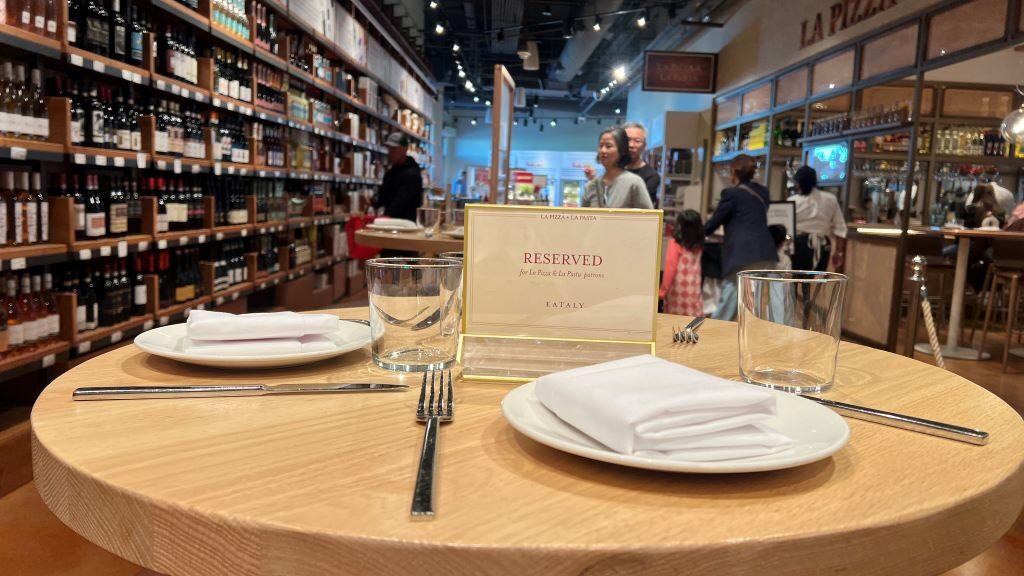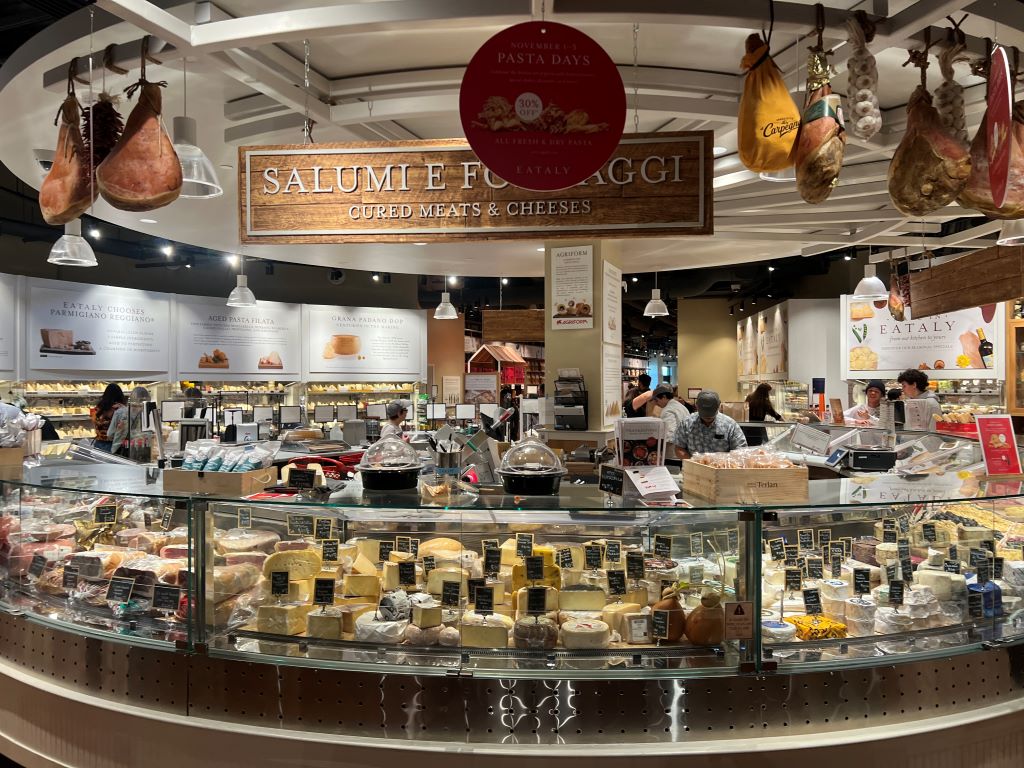
When I visited Eataly at Santana Row in San Jose to shop interesting Italian food items, I had a special experience. First, I was greeted by a big circular display of cured meats and cheeses (Salumi e Formaggi). The bright lights made the food look fresh.
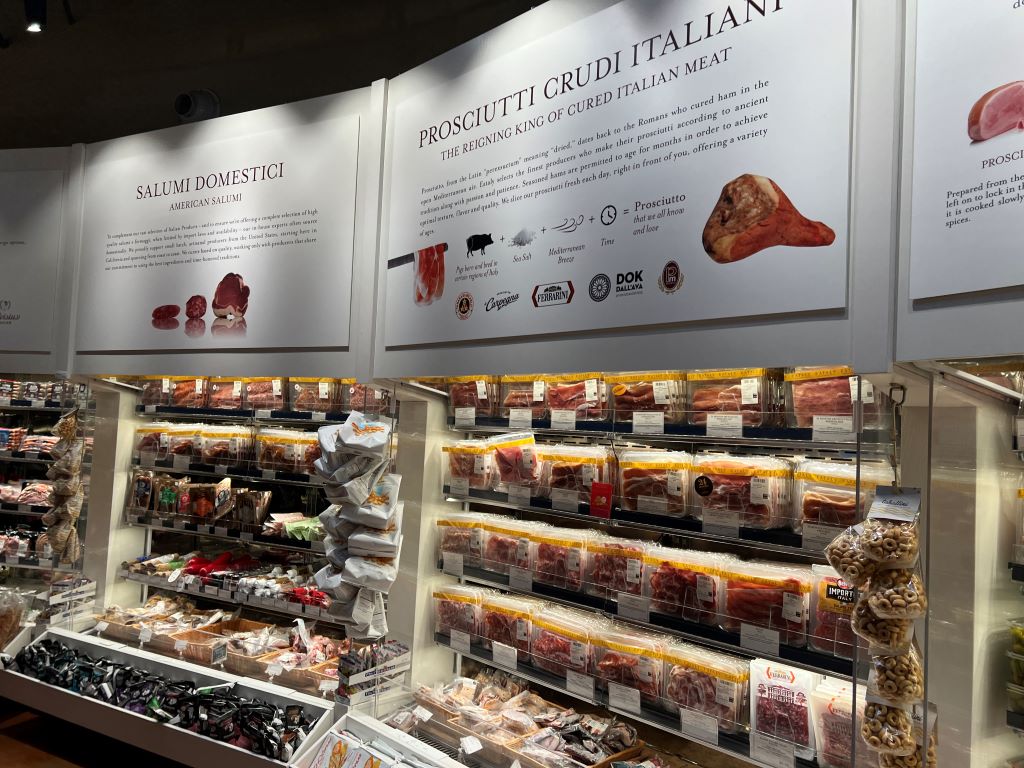
Around this circle, I noticed more salumi and prosciutti hanging on the walls, with their origins detailed above.
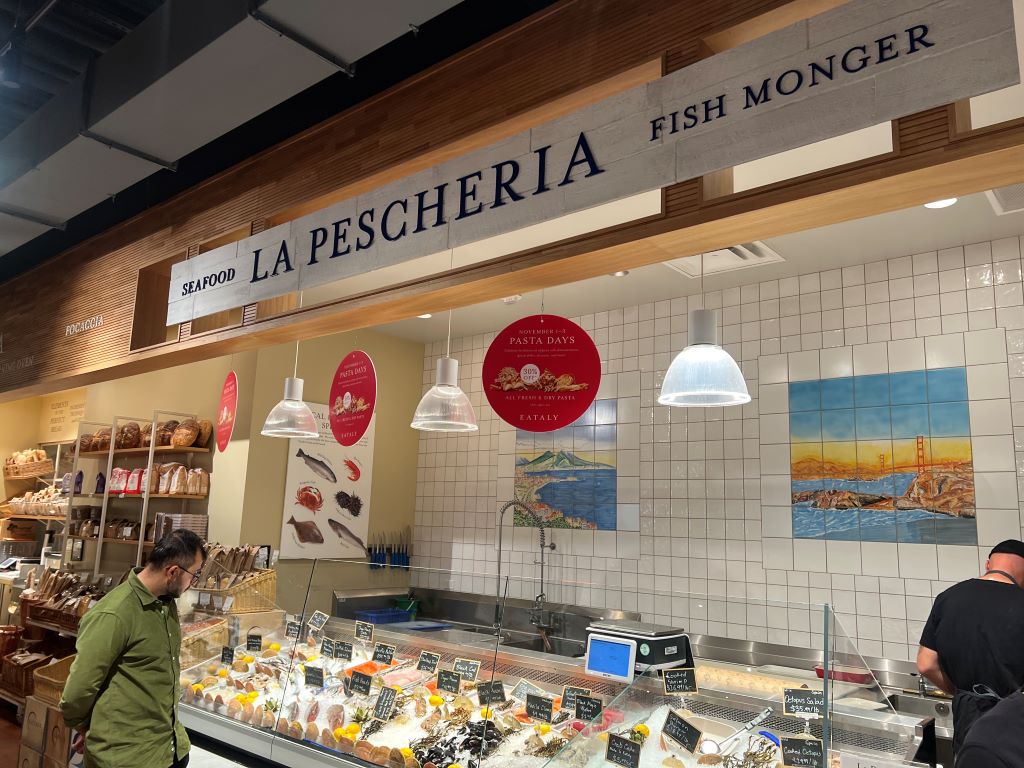

As I walked further, I found sections for fresh fish (La Pescheria) and handmade bread (La Panetteria), both well-designed and full of options.
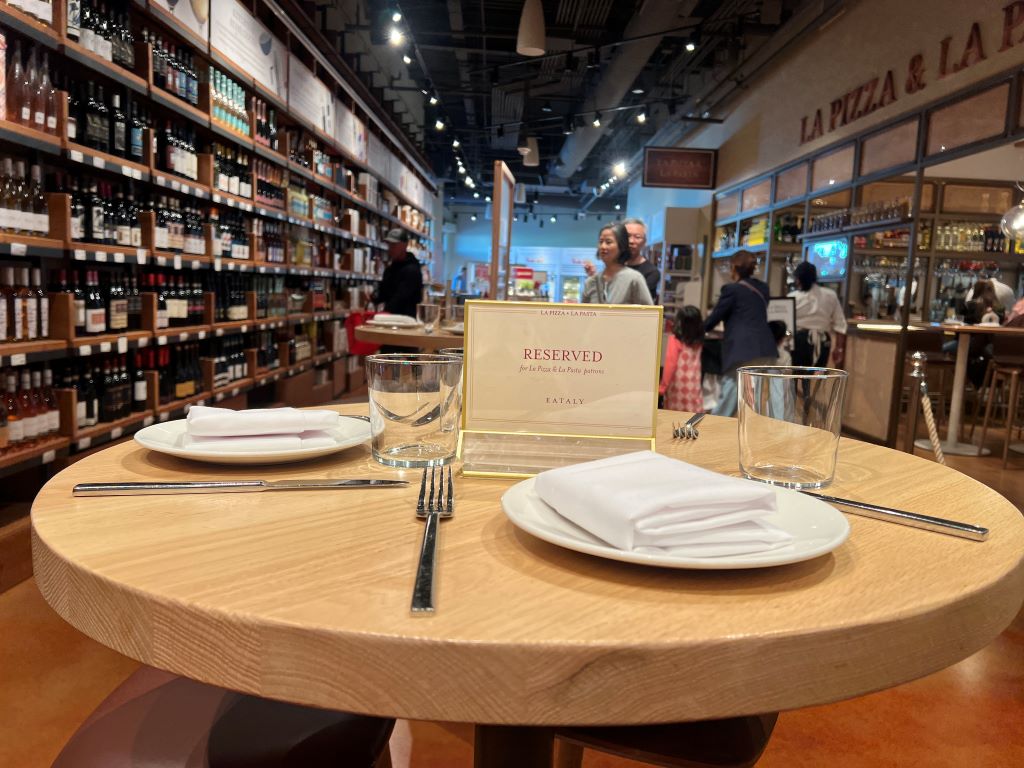
There was also a wine area where I could taste.
What impressed me most was the store’s deliberate use of design elements. Bright lighting made items look premium. Each food section had clear labels on the ceiling. The walls had different colors. Glass was used everywhere to make the store feel open and elegant. These details created a vibrant environment.
A high-arousal store environment, like Eataly, is ideal for customers seeking a recreational experience. This grocery store appeals to shoppers, like me, who enjoy exploring new products and are willing to pay more for the enhanced experience. Eataly is more than just selling fresh food; it creates a “wow” moment that encourages customers to perceive value beyond the product.
***
Reference
Kaltcheva, V. D., & Weitz, B. A. (2006). When should a retailer create an exciting store environment?. Journal of marketing, 70(1), 107-118.
Addressing inconsistent results in the literature, the conceptual framework that the authors develop proposes that the consumer’s motivational orientation moderates the effect of the arousal produced by a store environment on the pleasantness of the environment. Two experiments support the framework. When consumers have a recreational motivational orientation, high arousal has a positive effect on pleasantness, but when consumers have a task-oriented motivational orientation, high arousal decreases pleasantness. In addition, high arousal increases consumer intentions to visit and make purchases in the store for recreationally oriented consumers, but it has a negative impact on shopping behavior for task-oriented consumers. Pleasantness mediates the effect of arousal on shopping behavior.


